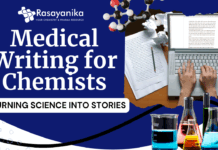A new strategy for developing porous, hollow catalysts for the Heck coupling reaction has been invented by a RUDN chemist and his colleagues from Iran. These flower-like hollow sphere catalysts are made of graphene layered with aluminum-cobalt hydroxides and palladium nanoparticles on its surface. The catalyst can reduce the synthesis time of substance essential to produce dyes—trans-stilbene by ten times without reducing the product yield. The catalyst could find its applications in the synthesis of organic dyes, pharmaceuticals, and agrochemistry. The journal Catalysis Letters published the results.
The Mizoroki-Heck is a palladium catalyst driven reaction used to create herbicides, dyes, and medicines. Double-layered aluminum and cobalt hydroxides are usually combined with a catalyst to increase the catalytic activity of palladium. But the use of such catalysts is limited by low stability, poor electrical conductivity, and short life cycle of the hydroxides.
To overcome these limitations, the chemists inserted the graphene oxide into the catalyst structure. The binding of graphene with the palladium nanoparticles is strengthened by sulfur and nitrogen atoms at the graphene surface. The chemists chose graphene as the carrier for palladium and aluminum and cobalt hydroxides due to its chemical stability, high electrical conductivity, and large surface area
.The research that led to the development of flower-like catalysts from graphene was conducted by Rafael Luque and his colleagues at RUDN University.
The chemists first oxidized the graphene and later synthesized flower-like hollow spheres in the presence of aluminum and cobalt salts. At high temperatures, they embedded nitrogen and sulfur atoms into the sphere. The new catalyst was made by recovering palladium compounds in the pores of hollow spheres. They studied the catalytic activity by heating it with styrene and aromatic derivatives of iodine, bromine, and chlorine.
The catalytic activity of the new porous sphere was demonstrated by the synthesis of trans-stilbene in two hours under mild reaction conditions with a 95% yield. The iodine derivatives’ reaction was faster than that of chlorine and bromine derivatives. Even after the repeated use of 8 times, the catalyst remained reactive, implying its high stability. Catalysts for the Heck coupling reaction to date either had a low yield ranging from 62% to 91% or required more time and high reaction temperature.
The researchers showed the potential of a flower-like hollow sphere catalyst and the role of alloy from graphene, nitrogen, and sulfur on a substrate.















































